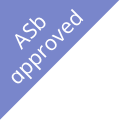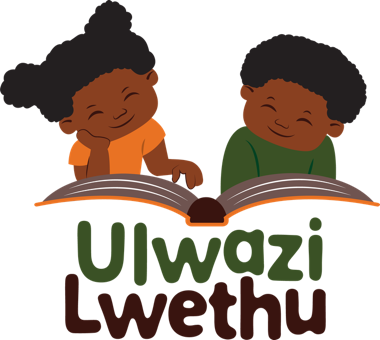
Mulalo Doyoyo’s clever ideas
Arnold Mushwana
Thulisile Shongwe

English
First paragraphs
——
This is the story of Mulalo Doyoyo, a South African Inventor and Scientist.
-
Inventors are people who think of, and create all types of new things.-
Mulalo uses Science and Technology to create inventions that help people and the environment.1
“I want to tell you about an Engineer who became a famous Inventor. He was born in the village of Vondwe,” begins Teacher Mary.
-
“Teacher, where is Vondwe?” asks Lulama.-
“It is in rural Limpopo Province,” answers Teacher.2
“Mulalo Doyoyo was born in 1970. Where were all of you in 1970?” asks Teacher Mary.
-
“We were not around in 1970, Teacher,” answers Jack with laughter.-
“Mulalo began school at Vondwe Primary in 1977,” continues Teacher.”3
“When he went to high school, he fell in love with Science and Engineering,” says Teacher Mary.
-
“What is Engineering?” she asks.-
“It’s Science and Technology combined,” Nkoka answers.-
“It’s about making machines, buildings, and other things,” replies Kulani.4
“You’re both right. Engineers design and create machines, objects, and structures. They use Science and Technology,” says Teacher.
-
“After completing school at Mbilwi Secondary, Mulalo won a scholarship to study Engineering at the University of Cape Town,” she continues.5
“When he was at university, Mulalo formed an organisation called Temescial.
-
This stands for ‘Technology, medicine, and science for all’.-
Temescial encourages young people to study Science, Technology, Engineering and Mathematics. Later, let’s find out more about this.”6
“After completing his first degree, Mulalo went to America. He studied and taught at universities there.
-
He taught Science and Applied Mathematics. What is Mathematics?” asks Teacher Mary.-
“The study of numbers, shapes and patterns,” says Akani.7
“That’s right, Akani,” says Teacher.
-
She continues with her story.-
“Mulalo has a doctorate. He has achieved the highest degree, a PhD. After this one, you are called a doctor. He is an expert in his field of Engineering.”8
“Now, before I tell you about Mulalo’s inventions, let me remind you about a building material called cement,” says Teacher.
-
“Cement contains limestone rock and is used in many buildings.-
Rock is mined, crushed very fine and heated to make cement.”9
“Learners, Mulalo invented a building material that doesn’t contain rock. Instead, it uses ash and other industrial wastes.
-
This means that it is possible to make cement without taking limestone rock from the Earth. The environment is not spoiled.”10
“Mulalo also invented the Ecocast brick making machine. This one saves water and energy. Water is a scarce resource!”
-
“We must not leave taps open and water running,” says Jack.-
“Yes, everyone has a responsibility to save water,” responds Lulama.11
“I am about to finish my story with a motorbike powered by hydrogen! The motorbike is called ‘Ahifambeni’. Mulalo invented this vehicle with other researchers,” says Teacher.
-
“A hydrogen motorbike, that’s clever!” says Kulani.-
“Ahifambeni! Let’s go!” says Nkoka.12
“Yebo! “Let’s go study Engineering and invent clever things!” says Kulani.
-
“Let’s use Science and Technology to solve problems and have fun!” says Nkoka.-
“I knew that Mulalo’s story would inspire you!” said Teacher Mary with a smile.13
——Questions
- What do you like studying? Why do you like studying that?
- Why do you think that Mulalo fell in love with Science and Engineering?
- Find out more about different types of Engineering.
- Find out more about African Inventors.
- How do Mulalo’s inventions safeguard the environment?
- What is STEM? Explain why it is important.
- Other than the University of Cape Town, find out seven other South African universities that teach engineering.
- Explain why water is a scarce resource.
14
——Books in this series
- Andile Mji
- Asnath Mahapa
- Bongani Mayosi
- Charlotte Maxeke
- Mmantsane Moche Diale
- Mulalo Doyoyo
- Tebello Nyokong
- Tshilidzi Marwala
15
——
This story was created and written in Xitsonga, as part of the Zenex Ulwazi Lwethu reading materials project in 2020.
16

Attribution CC BY

Your attribution should include the following:
Title: Mulalo Doyoyo’s clever ideas
Author/s: Arnold Mushwana
Translator/s: Arnold Mushwana
Illustrator/s: Thulisile Shongwe
Assurer/s: African Storybook
Language: English
© Zenex Foundation - Saide 2025 (Updated Edition)
Title: Mulalo Doyoyo’s clever ideas
Author/s: Arnold Mushwana
Translator/s: Arnold Mushwana
Illustrator/s: Thulisile Shongwe
Assurer/s: African Storybook
Language: English
© Zenex Foundation - Saide 2025 (Updated Edition)
CC BY includes the following elements:
BY – Credit must be given to the creator
– Credit must be given to the creator
BY
 – Credit must be given to the creator
– Credit must be given to the creator